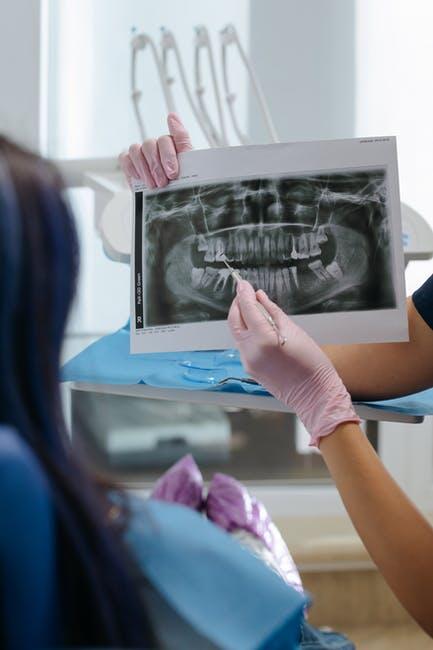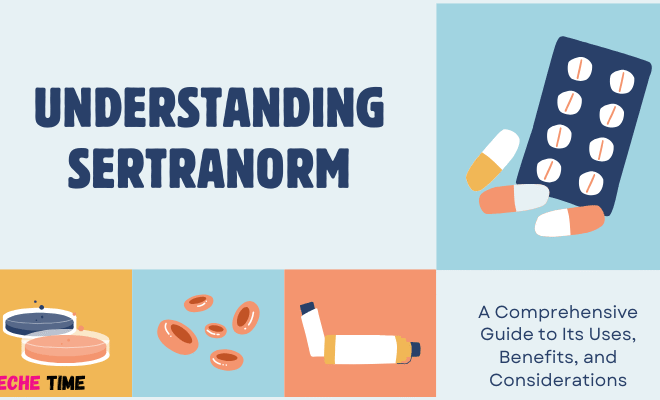
The Role of Technology in Modern Emergency Dental Care
Imagine waking up with sudden, intense tooth pain. What would you do? Today, modern emergency dental care is faster and easier.
From advanced imaging to virtual consultations, dentists can now diagnose problems more quickly. This helps them provide effective treatment with greater efficiency. These innovations not only save time but also improve patient comfort.
In this blog, we will explore how technology is transforming emergency dental care. These innovations are helping dentists keep smiles healthier and happier. Keep reading.
The Growing Need for Emergency Dental Care
Dental emergencies can happen anytime and often without warning. The demand for quick, reliable care continues to grow. Understanding this need helps highlight the importance of technological advancements.
Statistics
Emergency dental visits have increased in recent years. Millions of people seek urgent dental care annually.
Tooth pain and infections are among the top reasons for emergency visits. Emergency dental accounts for a large part of hospital visits related to oral health.
Children, adults, and seniors all contribute to these rising numbers. Untreated cavities, accidents, and gum infections drive many patients to seek immediate care.
For example, nearly 2 million emergency dental visits in the U.S. involve children each year. These figures highlight the growing need for accessible emergency dental services.
Understanding these statistics helps healthcare providers better prepare for patient needs. It also emphasizes the importance of modern tools to handle increasing demand efficiently.
Common Causes
Several factors contribute to dental emergencies. Accidents and sports injuries often result in broken or knocked-out teeth.
Biting into hard foods can cause chips or fractures. Poor oral hygiene may lead to infections and abscesses.
Tooth decay remains a primary cause of emergency dental visits. When cavities go untreated, they can lead to severe pain and infections. Additionally, gum disease can cause swelling and discomfort that requires immediate care.
Other common causes include dental trauma and complications from past dental work. Recognizing these causes helps individuals take preventive steps and seek timely help.
Challenges in Traditional Emergency Care
Traditional emergency dental care faced several obstacles. Limited access to specialized equipment often delays diagnosis and treatment.
Patients needed to visit multiple locations for X-rays and consultations. It prolonged their discomfort.
Communication between providers was also a challenge. Paper records made it difficult to track patient histories and treatment plans efficiently. These delays could worsen dental conditions and increase the risk of complications.
Furthermore, finding an available emergency dentist was often stressful. The introduction of advanced technology has addressed many of these challenges. It improves care delivery.
Technological Advancements in Diagnosis
Accurate diagnosis is the foundation of effective dental care. New diagnostic tools now provide clearer, faster insights into oral health issues.
Digital Imaging and X-Rays
Digital imaging has revolutionized dental diagnostics. Unlike traditional X-rays, digital images are clearer and faster to obtain. Dentists can view high-resolution images within seconds, speeding up diagnosis.
These images help identify cavities, infections, and fractures more accurately. Digital X-rays also reduce radiation exposure, making the process safer for patients. Dentists can share these images easily with specialists for consultations.
Portable X-ray devices have further improved accessibility. Patients can receive necessary imaging even outside traditional dental offices. This advancement makes emergency care more efficient and precise.
Intraoral Cameras
Intraoral cameras provide real-time, detailed views of the mouth. These small, handheld devices capture images from hard-to-see areas. Dentists can project these images on a screen, helping patients understand their condition.
Intraoral cameras improve diagnostic accuracy and patient engagement. They are useful in emergencies when identifying the cause of pain. This technology supports better communication between dentists and patients.
Additionally, images from intraoral cameras assist in documenting dental conditions. This information is valuable for treatment planning and follow-up care.
AI-Powered Diagnostic Tools
Artificial intelligence (AI) is transforming dental care with advanced diagnostic capabilities. AI programs analyze dental images to detect cavities, infections, and abnormalities. These tools can often identify issues that might be overlooked during manual examinations.
AI algorithms improve diagnostic consistency and accuracy. In emergency cases, rapid AI analysis can help dentists make faster treatment decisions. This efficiency reduces patient waiting times and enhances care outcomes.
As AI technology evolves, its role in emergency dental care is expected to grow. These tools will continue to assist dentists in providing quick, reliable diagnoses.
Teledentistry
Teledentistry has made dental care more accessible. Virtual consultations allow patients to connect with dentists without visiting the clinic. This option is especially helpful for individuals in remote areas.
Through video calls, dentists can assess symptoms and recommend immediate steps. In some cases, teledentistry helps patients avoid unnecessary emergency visits.
Dentists can also use these consultations to guide patients in managing pain. This support helps patients feel more comfortable until an in-person appointment is possible.
Teledentistry not only improves access but also reduces patient stress. Knowing that professional advice is just a video call away brings peace of mind. This reassurance can make emergencies feel less stressful.
Innovations in Treatment and Pain Management
Technological advancements have also improved treatment methods and pain management.
Laser Dentistry
Laser technology offers precise, less invasive dental treatments. Dentists use lasers to remove decay, reshape gums, and treat infections. Laser procedures often cause less discomfort and promote faster healing.
In emergencies, lasers can quickly disinfect affected areas and stop bleeding. The reduced need for anesthesia makes the process less stressful for patients. Laser dentistry continues to grow in popularity due to its efficiency and effectiveness.
CAD/CAM Technology
Computer-Aided Design/Computer-Aided Manufacturing (CAD/CAM) technology enables same-day dental restorations. Dentists can create crowns, bridges, and veneers in a single visit.
In emergencies, CAD/CAM technology reduces the need for temporary solutions. Patients receive permanent restorations quickly, minimizing discomfort and follow-up visits.
This innovation streamlines treatment and enhances patient satisfaction. Designing restorations on-site is a big advancement. It makes emergency care faster and easier.
Sedation Technology
Modern sedation technology ensures patient comfort during emergency procedures. New sedation methods are safer and more adjustable to individual needs.
Dentists can choose from various sedation options based on the patient’s condition. For instance, nitrous oxide provides quick relaxation, while oral sedatives offer longer-lasting effects.
These advancements help anxious patients feel more at ease. Improved sedation techniques contribute to better patient experiences during emergency care.
3D Printing
3D printing technology has revolutionized dental care by creating customized tools. It also makes prosthetics quickly and efficiently. Dentists use 3D printers to produce crowns, aligners, and surgical guides on demand.
In emergencies, this capability significantly reduces treatment time. Patients no longer need to wait weeks for dental devices. 3D printing also supports more accurate, personalized care.
The growing use of 3D printing is improving treatment efficiency. It also enhances patient satisfaction with faster, customized solutions.
Enhancing Patient Experience and Accessibility
Patient comfort and accessibility are essential in emergency dental care. Technology plays a key role in improving both aspects.
Mobile Apps and Online Scheduling
Mobile apps simplify appointment scheduling and access to care. Many dental practices now offer apps that allow patients to book visits easily.
In emergencies, quick scheduling can prevent further complications. Online systems provide real-time availability and reminders.
Some apps also include features like digital forms and virtual check-ins. These tools reduce waiting times and make the entire process smoother.
Additionally, mobile apps often provide access to helpful resources. Patients can find tips for handling common dental emergencies. They can learn about preventive care.
This information empowers patients to make informed decisions. It also takes better care of their oral health.
These tools make emergency dental care more accessible and convenient. With just a few taps, patients can find nearby providers and get the help they need quickly.
By using these apps, it’s easy to find an emergency dentist nearby. This ensures prompt care when it’s most needed.
These tools make emergency dental care more accessible and convenient. With just a few taps, patients can find nearby providers and get the help they need quickly.
Virtual Reality (VR) for Anxiety Reduction
VR technology helps reduce dental anxiety, especially for children. Patients wear VR headsets to experience calming visuals during procedures.
VR programs can transport patients to peaceful environments like beaches or forests. This immersive experience distracts them from the sights and sounds of dental work.
Reducing anxiety improves cooperation and overall experience. This approach is gaining popularity in emergency and routine care settings.
Research shows that VR can lower pain perception during treatments. Dental clinics use this technology to create a more positive experience. It helps make visits less stressful for young or nervous patients.
Remote Monitoring
Remote monitoring tools help track patients’ recovery after emergency procedures. Smart devices send updates to dentists, allowing for timely follow-ups.
These tools monitor healing progress and detect signs of infection early. For example, some apps use sensors to track oral temperature or swelling. If unusual changes occur, the system alerts the dentist to intervene.
This technology helps detect complications early, ensuring better outcomes. Remote monitoring adds convenience and peace of mind for patients. It also reduces unnecessary follow-up visits, saving time for both patients and providers.
The Role of Data and Analytics in Emergency Dental Care
Data and analytics play a crucial role in improving decision-making in dental care. Dentists can provide more accurate diagnoses and personalized treatment plans.
Electronic Health Records (EHRs)
EHRs provide easy access to patient histories and treatment plans. Digital records improve communication among healthcare providers.
In emergencies, quick access to medical information helps dentists make informed decisions. EHR systems enhance care coordination and safety. EHRs streamline administrative tasks, allowing dental teams to focus more on patient care.
Predictive Analytics
Predictive analytics uses data to identify potential dental issues early. By analyzing trends, dentists can take preventive measures.
This proactive approach helps reduce emergency visits and improve oral health outcomes. This technology helps dentists identify patterns that might suggest future problems. It leads to early interventions.
Patient Education
Technology plays a key role in educating patients about dental care. Interactive tools and online resources provide valuable information. Informed patients are more likely to seek timely care and follow oral health advice.
These resources empower patients to take control of their oral health. It leads to better overall care and fewer emergency visits.
Challenges and Ethical Considerations
Integrating technology into emergency dental care offers many benefits but also presents challenges. These challenges include:
Cost and Accessibility
One of the biggest challenges is the cost of advanced dental technology. High-tech equipment like digital X-rays, 3D printers, and AI diagnostic tools are expensive.
This means that not all dental clinics, especially in rural areas, can afford these tools. As a result, some patients may not have access to the latest treatments.
Efforts are being made to reduce costs and make these technologies more accessible. For example, some companies are developing more affordable versions of high-tech equipment.
Government programs can help clinics in underserved areas get the tools they need. Ensuring that everyone has access to modern dental care is crucial.
Data Privacy
The rise of digital records and online consultations has heightened data privacy concerns. Electronic Health Records (EHRs) store sensitive information about patients. Protecting this data from hackers and unauthorized access is essential.
Dental clinics must use strong cybersecurity measures to keep patient information safe. This includes using secure passwords, encryption, and regular security updates.
Patients should also be informed about how their data is used and protected. Building trust through transparency helps patients feel more comfortable with digital dental care.
Overreliance on Technology
While technology aids in diagnosis and treatment, over-reliance should be avoided. Dentists still need to use their clinical skills and judgment. It is to make the best decisions for their patients.
Technology is a tool, not a replacement for human expertise. AI can help identify potential issues in dental images.
Yet, a dentist must still review the findings for an accurate diagnosis. Dentists can consider the patient’s overall health.
Overreliance on technology could lead to missed diagnoses or inappropriate treatments. Balancing technology with professional expertise ensures optimal patient care.
Learn the Role of Technology in Modern Emergency Dental Care
Technology has transformed modern emergency dental care in many ways. It makes diagnosing and treating issues faster and more precise.
Digital imaging, AI tools, and teledentistry improve patient comfort and access to care. Virtual consultations help reduce unnecessary visits.
Innovations like CAD/CAM technology speed up treatments. The use of data and analytics ensures more accurate diagnoses and timely interventions.
As dental technology advances, it will improve the efficiency of care. Future developments promise even greater improvements for patients and healthcare providers.
Did you find this article helpful? If so, check out the rest of our site for more informative content.








